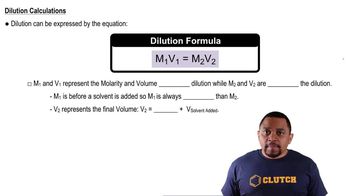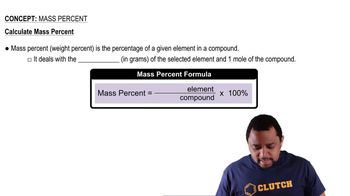Here are the essential concepts you must grasp in order to answer the question correctly.
Dilution
Dilution is the process of reducing the concentration of a solute in a solution, typically by adding more solvent. In this context, diluting a 4% (m/v) KCl solution to a 2% (m/v) solution involves adding a specific volume of solvent to decrease the concentration of potassium chloride in the solution.
Recommended video:
Mass/Volume Percent (m/v)
Mass/Volume percent (m/v) is a way to express the concentration of a solution, defined as the mass of solute divided by the volume of solution, multiplied by 100. For example, a 4% (m/v) KCl solution contains 4 grams of KCl in every 100 mL of solution, which is crucial for understanding how to achieve the desired concentration through dilution.
Recommended video:
Concentration Calculation
Concentration calculation involves using the formula C1V1 = C2V2, where C1 and V1 are the initial concentration and volume, and C2 and V2 are the final concentration and volume. This formula helps determine how much of the original solution is needed to achieve the desired concentration after dilution, which is essential for solving the problem presented.
Recommended video:
Percent Concentrations Concept 1

 Verified step by step guidance
Verified step by step guidance Verified Solution
Verified Solution

